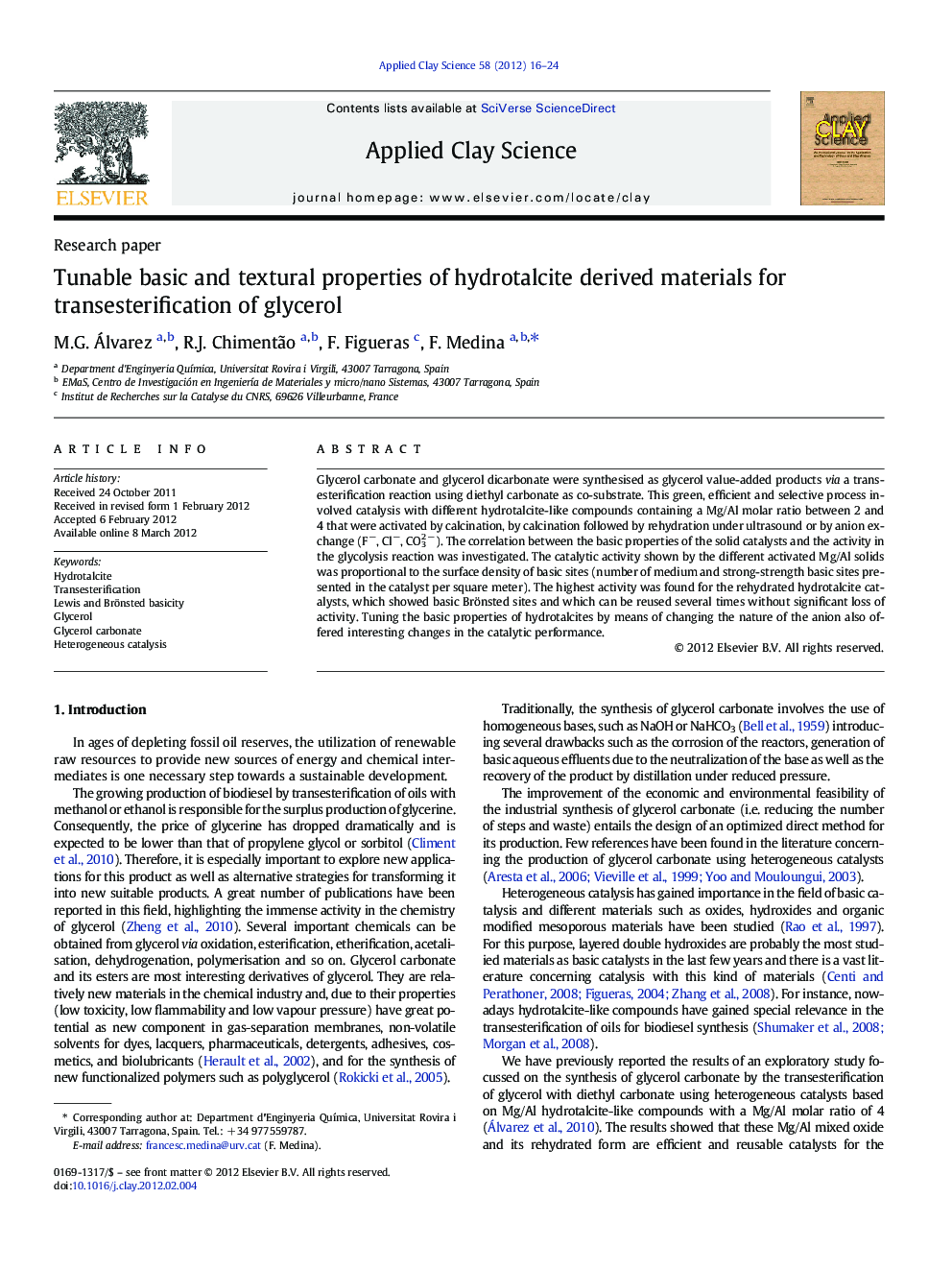| Article ID | Journal | Published Year | Pages | File Type |
|---|---|---|---|---|
| 1695297 | Applied Clay Science | 2012 | 9 Pages |
Glycerol carbonate and glycerol dicarbonate were synthesised as glycerol value-added products via a transesterification reaction using diethyl carbonate as co-substrate. This green, efficient and selective process involved catalysis with different hydrotalcite-like compounds containing a Mg/Al molar ratio between 2 and 4 that were activated by calcination, by calcination followed by rehydration under ultrasound or by anion exchange (F−, Cl−, CO32 −). The correlation between the basic properties of the solid catalysts and the activity in the glycolysis reaction was investigated. The catalytic activity shown by the different activated Mg/Al solids was proportional to the surface density of basic sites (number of medium and strong-strength basic sites presented in the catalyst per square meter). The highest activity was found for the rehydrated hydrotalcite catalysts, which showed basic Brönsted sites and which can be reused several times without significant loss of activity. Tuning the basic properties of hydrotalcites by means of changing the nature of the anion also offered interesting changes in the catalytic performance.
Graphical abstractFigure optionsDownload full-size imageDownload as PowerPoint slideHighlights► Synthesis of glycerol carbonates by transesterification of glycerol over hydrotalcites. ► It was found a good correlation between basicity and catalytic activity. ► Type of basicity, Lewis or Brönsted, has an influence on catalytic activity. ► Changing the nature of the interlayer anion leads to changes in the activity. ► Catalysts can be reused without significant loss of activity.
